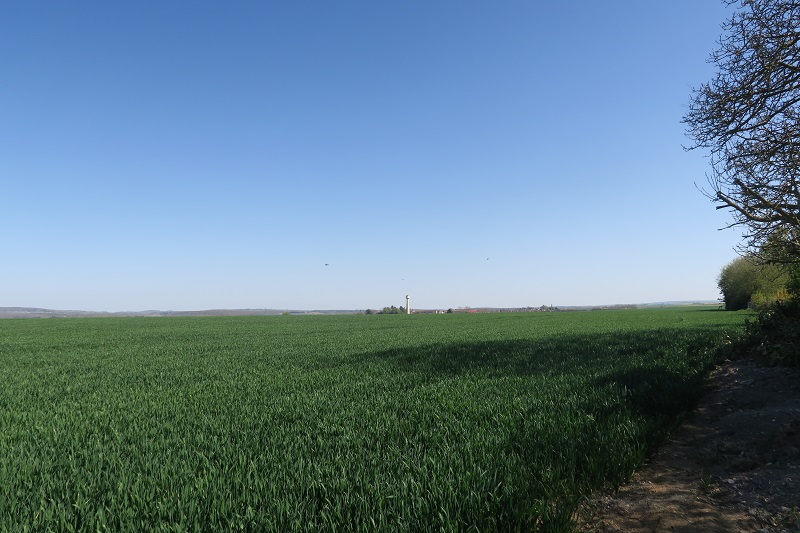Informations directionnelles
Continuer le chemin jusqu’à la départementale 188. Prendre à gauche sur la route jusqu’à la croix des Bons Garçons, puis encore à gauche jusqu’au cimetière dans lequel se trouve une des croix du village.
Prochain point : lat="49.15453" lon="1.88548"
In the heart of the Vexin agricultural plateau
Cross are religious or votive…
Remnants of baths and coins from Gallo-Roman times found in Les Luyas give an indication of just how hold the commune is.
The place name has changed over the centuries. According to etymologists, the name comes from the Gallic
Betulla or
Boeley meaning birch. We can track the first references in texts as far back as 750 when Pippin III (also known as Pippin the Short) gave lands to the abbey of Saint-Denis, including
Bodalcha or
Bodalca (Le Bellay). In 1151, Archbishop Hugues II confirmed his rights to many chapels, churches, woods, tithes and houses in
Beleium (Le Bellay).
Jumping forward to 1901, the municipal council meeting on 18 August discussed postal muddles: post for delivery to Le Bellay was getting mixed up with Belloy in the canton of Luzarches. And so Le Bellay got its full name, Le Bellay-en-Vexin.
Le Bellay-en-Vexin is on the very flat Vexin plateau. The area has no rivers and the water table is 40 metres deep. Beside the well in the centre of the village, the only other water source was the pond known as “
du fond du Barry”. The “communal” water source in the middle Grande rue collected rainwater. Clearly, water was not the reason people moved to the area.
Agriculture and the landscape
During the 19th century, there were 12 small farms in Le Bellay, each no more than 7 hectares (17 acres), three mid-sized holdings and three big farms. The main activity was agriculture, with most farmers growing grains. In 1899, the commune stretched over 505 hectares (1,248 acres), half of which belonged to Hôtel-Dieu. The old woods disappeared from the landscape during this time.
Farmers in the village kept livestock up to 1995. There’s a shepherd in all the census records –three in the 1866 census. The herd had around 500 goats and 2,000 sheep.




